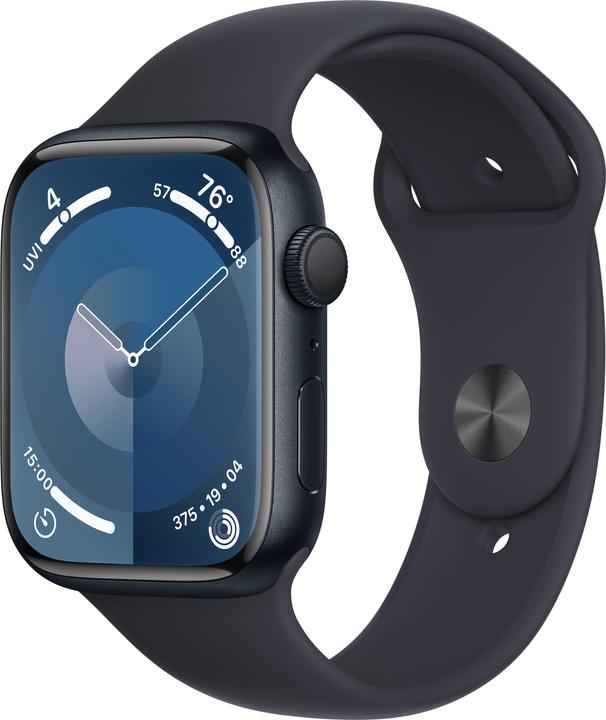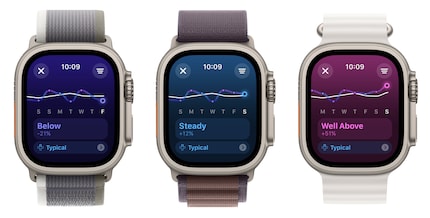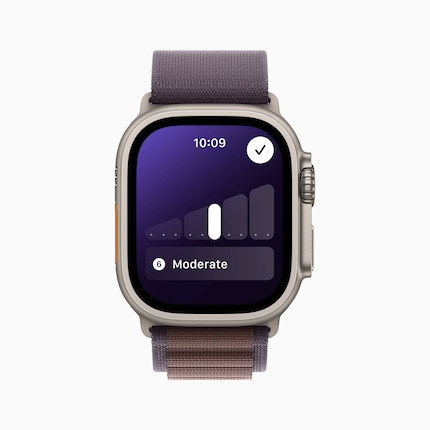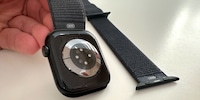

iOS 18 and WatchOS 11: new useful features for sports enthusiasts
Training too hard? Too lazy? Your Apple Fitness app will soon tell you. With the new operating system for iPhone and Apple Watch, you also get new Vitals – information about sleep, heart rate, body temperature, blood oxygen and breathing.
If you’re wearing a Garmin or Polar smart sports watch, you can stop reading right now. Because Apple’s latest software for its Apple Watch and iPhone won’t be anything new to you. For Apple, however, it’s an important step. Until now, it’s lagged a long way behind its competitors when it comes to sports tracking. The new functions are at least narrowing the gap somewhat.
Over the past few weeks, I’ve been testing the beta versions of the now widely rolled out versions of iOS and WatchOS. Here are three things you should know if you’re an athlete.
1. Are you training too much or too little?
Apple now shows you whether you need a rest day or whether you should start your next training session. In the Fitness app, this is called «training load». It compares the training load of the last seven days and that of the last 28 days, displayed as two curves. Basically, if the 7-day curve is below the 28-day one, you run the risk of losing the fitness level you’ve achieved. If the load’s too high, there’s an increased risk of injury. I find this a rough but useful indicator when planning my training.

Source: Apple
Apple has deliberately chosen not to display the training load in numbers, as the sports specialists at Garmin or Polar do. This makes the display easier to understand, but also less valuable for ambitious athletes. Garmin, for example, has a green area defined by absolute values. This area is where you can do your training sessions. Apple doesn’t have this upper and lower load limit. You only have the two moving averages as a guide.
A quick note: it can take up to ten days after updating to the new iOS before you see the training load. This is because some data needs to be collected before anything can be displayed.
As a Fitness+ subscriber, I’d like to see suggestions of exercises that suit my training load in future. For example, if I went jogging for a long time on Saturday, the system could recommend a stretching session for Sunday.
2. How hard did you train?
Assessment of the training load also factors in how much I exerted myself. The scale ranges from 1 (light) to 10 (extreme). For some training sessions, the app itself suggests what the load might have been. Apple uses the heart rate data to do this, for example. But you can always change the suggested load value manually. This works in both the iPhone app and on the watch. Where Apple doesn’t make a suggestion, I’m reminded to note down the load after the training session. Depending on the default setting when the new feature’s rolled out, you may also have to activate the reminder in your settings first.

Source: Apple
3. How are you actually doing?
The next time you’re asked how you are, you can answer with a quick glance at your Apple Watch. The new Vitals app shows you whether you’ve slept for long enough, whether your heart rate, breathing and blood oxygen are within normal range and the change in temperature on your wrist. Apple combines these five values to create the Vitals display. They’re arranged next to each other and can deviate upwards or downwards – you’ll get a push notification if this happens.

Source: Apple
However, the added value of this information is limited. If your app shows a lower sleep duration figure, you know you’ve not slept enough and should go to bed earlier. Apple certainly has potential to make the information more useful in the future. In my test, I noticed that after my initial curiosity, my interest in the Vitals waned considerably after just a few days.

Journalist since 1997. Stopovers in Franconia (or the Franken region), Lake Constance, Obwalden, Nidwalden and Zurich. Father since 2014. Expert in editorial organisation and motivation. Focus on sustainability, home office tools, beautiful things for the home, creative toys and sports equipment.
Practical solutions for everyday problems with technology, household hacks and much more.
Show all

